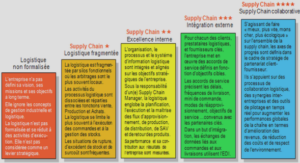Composite materials with organic matrices, such as carbon fiber-reinforced polymer (CFRP) and glass fiber reinforced polymer (GFRP), are increasingly being employed in multiple industrial sectors, such as aeronautic, marine, submarine, wind energy, and road vehicles. In general, the fiber-reinforced polymer (FRP) materials are distinguished by their combination of high mechanical properties, chemical stability, and low density which cannot be achieved with ordinary metals. As an example of an industry with developing demand, lightweight vehicles, enabled by FRPs, are becoming increasingly significant due to efforts to optimize fuel consumption and reduce air pollution.
In their most simple form, composite materials are comprised of two components: the fibers and the matrix. The fibers bear the mechanical loads, while the matrix holds the fibers together to form a cohesive shape and protects them from corrosion. However, the interface fiber/matrix is a weak spot in composite materials. Typically, the breakage of the composite part is caused by a defect in the vicinity of the interface. To overcome this issue, researchers have sought to improve the matrix bonding properties to strengthen FRP materials.
The high mechanical strength of composite materials makes them inherently abrasive which results in excessive tool wear during machining and high cutting temperatures. Machining at a temperature higher than the glass transition temperature of the polymeric matrix induces a poor quality of the machined surface and often leads to premature failure. Moreover, polymer matrices are insulative materials that limit the electrical and thermal conductivities of the material. The low thermal conductivity of the CFRPs prevents the dissipation of the heat generated during machining. Therefore, enhancing the heat dissipation would reduce the cutting temperature which should reduce the defects induced by machining and increase the lifetime of the cutting tools.
Manufacturing Methods
There are many manufacturing methods for FRP materials. The selection of a suitable method greatly depends on the matrix type, the fiber length, and the field of application. In this section, three fundamental approaches are presented: wet lay-up, autoclave curing, and vacuumassisted resin transfer molding.
Wet lay-up
The wet lay-up process is generally used for the production of small numbers of units. This process is the lowest cost (Campbell, 2012). It is suitable for large, thick objects, such as in marine manufacturing, as well as small and complex parts.
• The first step is to prepare the mold. This consists of two sub-steps. Water cleaning of the mold to guarantee a good surface finish and coating the mold with a release agent to assure a smooth demolding process.
• Placing the first reinforcement ply on top of the mold with respecting the required orientation. Then, pouring onto the dry reinforcement the quantity of resin needed to fully impregnate it.
• This step is repeated until the desired part thickness is reached.
• Between the addition of each dry ply, hand rollers are used to eliminate trapped air bubbles, to remove the excess resin, and to compact the plies.
• Finally, the polymer is cured at room temperature or at higher temperature.
Typically, a vacuum bag is not necessary for this method. However, it has been shown that the vacuum can improve composite quality. In this method, the weight and fiber volume fraction are not easily controlled. The precision is limited by the hand labor used to remove air and compact the reinforcement.
Autoclave Curing
Autoclave curing assures homogeneous dispersion of both the fiber and matrix and a higher fiber volume fraction, compared to other methods. Composites produced through autoclave processing possess the best mechanical properties (Campbell, 2012). However, the cost is relatively high because it requires a great amount of hand labor and autoclave processing. In this method, layers of reinforcement impregnated with polymer are placed on top of the mold in a way that respects the required fiber orientation and thickness. Next, a vacuum pressure is applied to extract the air and to compact the layers. To cure the laminates, the assembly is placed inside an autoclave under a specific pressure and temperature .
Graphene Filler
Graphene has gained enormous attention over the last decade (Prasai, Tuberquia, Harl, Jennings, & Bolotin, 2012 ; Zhao, Hayner, Kung, & Kung, 2011). The modern study of graphene started in 2004 with the first report of ‘scotch tape’ graphene exfoliation (Randviir, Brownson, & Banks, 2014), which presented an easy method for synthesizing it. Modeling predicts that graphene possesses the strongest mechanical properties of any known material (Teti, 2002). The young’s modulus and the ultimate strength of a single layer equal to approximately 1 TPa and 130 GPa, respectively (Campbell, 2010a). Moreover, graphene excels in its high thermal conductivity of about 5000 W/(m.K) and excellent electrical conductivity of almost 6000 S/cm. The material has been employed in a large number of academic and industrial trials in various fields, such as: corrosion prevention (Prasai et al., 2012), longer-lasting batteries (Zhao et al., 2011), efficient solar cells (Hui Wang, Sun, Tao, Stacchiola, & Hu, 2013), display panels (Radivojevic et al., 2012), circuit boards (Hyun, Park, & Chin, 2013), and detection of medical diseases (Bonanni & Pumera, 2011).
Graphene can be added to metals, polymers, and ceramics to create composite materials with improved properties in the form of higher conductivity, thermal stability and tolerance to pressure (Lohar, 2017). Graphene can be naturally found in the graphite. Graphite is composed of multiple atomic layers of graphene bound together by van der Waals force . These stacked layers form a hexagonal honeycomb crystal structure. Each atomic layer consists of sp² bonded carbon atoms and the thickness of graphene particles can range from monatomic (0.345 nm) to 100 nm (Al Imran, 2016). Other carbon derivatives exist based on the graphene layer structure in shapes such as carbon nanotubes and buckminsterfullerenes (buckyballs).
INTRODUCTION |






